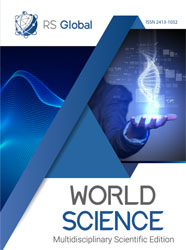CRANIOTOMY WITH A HERMETIC CLOSURE OF THE CRANIAL CAVITY
Abstract
Surgical intervention on the contents of the cranial cavity is universally carried out by applying several burr holes, which remain uncovered and serve as a site for the development of a number of postoperative complications. The lack of hemeticity of the skull in some cases require repeated intervention. The purpose of the proposal is to create a trepanation method that excludes the formation of burr holes and promotes hermetic closure of the cranial cavity, excluding the possibility of postoperative complications.
The goal is achieved by sawing out conical holes in the skull with the simultaneous formation of small bone flaps in the form of a truncated cone. A large bone fragment of a derivative form is cut out with the proposed tool or in the usual way with a Gigli or Olivecrona saw. In the absence of contraindications, a large bone flap is placed in place, and small bone fragments are combined with the place of their sawing, thereby restoring the integrity of the skull, which is closed at the end of the intervention.
The hermetic craniotomy method eliminates the possibility of developing postoperative complications inherent in craniotomy methods, carried out by applying burr holes.
The method of craniotomy, which provides for hermetic closure of the cranial cavity, among other things, returns the brain to its natural state, protected from all kinds of external influences, including postoperative complications
References
Костно-пластическая трепанация черепа. Retrieved from https://meduniver.com/Medical/Topochka/249.html
Декомпрессивная трепанация черепа. Retrieved from http://www.medicalenc.ru/17/stomatologia/hirurgiya/dekompressivnaya-trepanatsiya-cherepa.shtml
Ромоданов А.П. 1986. Атлас Операций на Головном Мозге. Москва. «Медицина»
Views:
293
Downloads:
279
Copyright (c) 2022 The author

This work is licensed under a Creative Commons Attribution 4.0 International License.
All articles are published in open-access and licensed under a Creative Commons Attribution 4.0 International License (CC BY 4.0). Hence, authors retain copyright to the content of the articles.
CC BY 4.0 License allows content to be copied, adapted, displayed, distributed, re-published or otherwise re-used for any purpose including for adaptation and commercial use provided the content is attributed.











